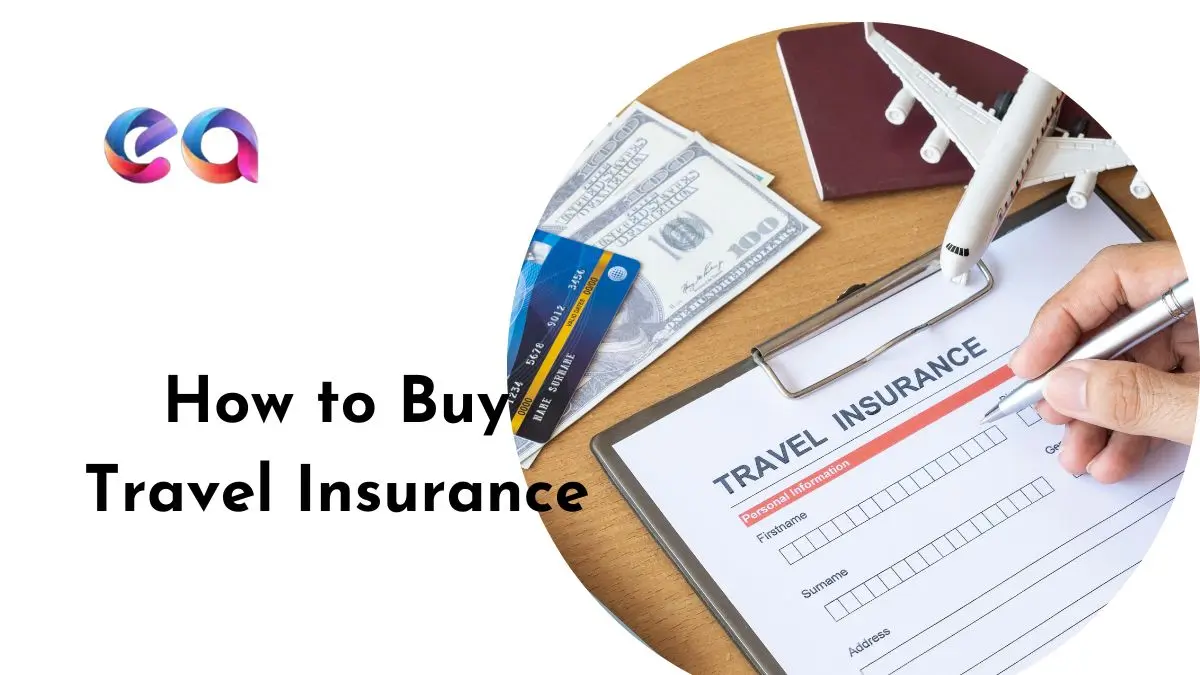
Traveling with your family can be a wonderful experience, but it can also come with some risks and uncertainties. You never know when an unexpected event might disrupt your plans, cause you to incur extra expenses, or even put your health and safety in jeopardy. That’s why it’s important to buy travel insurance for a family trip, especially if you are traveling abroad.
Table of Contents
Travel insurance is a type of insurance that covers you and your family members for various losses and damages that may occur during your trip. Depending on the policy you choose, travel insurance can provide coverage for:
- Medical expenses, including emergency treatment, hospitalization, evacuation, and repatriation
- Trip cancellation, interruption, or delay, due to reasons such as illness, injury, death, weather, natural disasters, terrorism, or civil unrest
- Baggage loss, damage, or delay, including reimbursement for essential items and personal effects
- Passport loss or theft, including assistance with obtaining a replacement or emergency travel documents
- Personal liability, in case you cause injury or damage to a third party or their property
- Accidental death and dismemberment, which pays a lump sum to your beneficiaries in case of a fatal accident
- Legal expenses, in case you need legal representation or advice during your trip
- Additional benefits, such as travel assistance services, home burglary insurance, adventure sports cover, etc.
Travel insurance can give you peace of mind and financial protection when you travel with your family. However, not all travel insurance policies are the same. There are different types of travel insurance plans available in the market, and each one has its own features, benefits, limitations, and exclusions. Therefore, it’s essential to compare different options and choose the best one for your family trip.
Types of Travel Insurance Plans for Family Trips:
There are two main types of travel insurance plans that you can buy for a family trip: single trip plans and annual multi-trip plans.
Single Trip Plans
A single trip plan is a travel insurance policy that covers you and your family members for one specific trip. You can choose the duration of the coverage, which usually ranges from one day to one year. A single trip plan is suitable for travelers who don’t travel frequently or who have different destinations and needs for each trip.
Some of the advantages of a single trip plan are:
- It is flexible and customizable. You can choose the coverage amount, the deductible amount, the destination country or region, and the optional benefits that suit your trip.
- It is affordable. You only pay for the coverage that you need for your trip. The premium depends on factors such as the duration of the trip, the age of the travelers, the destination country or region, and the level of coverage.
- It is easy to buy. You can purchase a single trip plan online or offline from various providers. You just need to provide some basic information about your trip and your family members.
Some of the disadvantages of a single trip plan are:
- It is limited. You can only use it for one trip. If you want to travel again within the same year, you will need to buy another policy.
- It may not cover pre-existing medical conditions. Some single trip plans exclude or limit coverage for medical expenses related to pre-existing medical conditions that you or your family members have before the start of the trip.
- It may have a waiting period. Some single trip plans have a waiting period before the coverage starts. This means that if something happens during this period, such as an illness or injury that prevents you from traveling, you will not be covered.
Annual Multi-Trip Plans
An annual multi-trip plan is a travel insurance policy that covers you and your family members for multiple trips within a year. You can choose the maximum duration of each trip, which usually ranges from 30 days to 90 days. An annual multi-trip plan is suitable for travelers who travel frequently or who have similar destinations and needs for each trip.
Some of the advantages of an annual multi-trip plan are:
- It is convenient and cost-effective. You only need to buy one policy for the whole year. You don’t have to worry about buying a new policy every time you travel. You also save money by paying one premium instead of multiple premiums.
- It covers pre-existing medical conditions. Most annual multi-trip plans cover medical expenses related to pre-existing medical conditions that you or your family members have before the start of each trip.
- It has no waiting period. Most annual multi-trip plans have no waiting period before the coverage starts. This means that if something happens before or during any of your trips within the year, you will be covered.
Some of the disadvantages of an annual multi-trip plan are:
- It is less flexible and customizable. You cannot choose different coverage amounts, deductibles, destinations, or optional benefits for each trip. You have to stick with the same plan for the whole year.
- It is more expensive. You have to pay a higher premium upfront for an annual multi-trip plan. The premium depends on factors such as the maximum duration of each trip, the age of the travelers, the destination country or region, and the level of coverage.
- It has a limit on the number of trips. Most annual multi-trip plans have a limit on the number of trips that you can take within the year. If you exceed this limit, you will not be covered.
How to Compare and Choose the Best Travel Insurance Plan for Your Family Trip
To compare and choose the best travel insurance plan for your family trip, you need to consider several factors, such as:
- The destination of your trip. Different destinations have different risks and requirements for travel insurance. For example, some countries have higher medical costs, higher crime rates, or higher chances of natural disasters than others. Some countries also require travelers to have a minimum level of travel insurance coverage or a specific type of travel insurance policy to enter or stay in the country. Therefore, you need to check the travel advisories and regulations of your destination country before buying travel insurance.
- The duration of your trip. The longer your trip, the higher the chances of something going wrong. Therefore, you need to buy travel insurance that covers you for the entire duration of your trip. You also need to check the maximum duration of each trip that your policy allows if you are buying an annual multi-trip plan.
- The age and health of your family members. The older or less healthy your family members are, the higher the chances of them needing medical attention during your trip. Therefore, you need to buy travel insurance that covers them for medical expenses, including pre-existing medical conditions, emergency evacuation, and repatriation. You also need to check the age limit and the medical screening requirements of your policy.
- The activities and interests of your family members. The more adventurous or diverse your family members are, the higher the chances of them encountering accidents or mishaps during your trip. Therefore, you need to buy travel insurance that covers them for personal liability, accidental death and dismemberment, legal expenses, and optional benefits such as adventure sports cover, cruise cover, golf cover, etc.
- The budget and preferences of your family members. The more comprehensive or customized your travel insurance is, the more expensive it will be. Therefore, you need to buy travel insurance that fits your budget and preferences. You also need to compare the premiums, deductibles, coverage amounts, exclusions, and claim procedures of different policies.
To compare different travel insurance policies for your family trip, you can use online comparison tools or websites that allow you to enter some basic information about your trip and your family members and get quotes from various providers. You can also read reviews and ratings from other travelers who have used the same policies or providers.
Some of the online comparison tools or websites that you can use are:
- VisitorsCoverage.com: This is a comparison site that provides quotes from different providers based on your trip details and preferences. You can compare policies on their coverage, price, ratings, and reviews. You can also filter policies by specific benefits or features that you want.
- Squaremouth: This is another comparison site that provides quotes from different providers based on your trip details and preferences. You can compare policies on their coverage, price, ratings, reviews, and customer service. You can also filter policies by specific benefits or features that you want.
- InsureMyTrip: This is yet another comparison site that provides quotes from different providers based on your trip details and preferences. You can compare policies on their coverage, price, ratings, reviews, and customer service. You can also filter policies by specific benefits or features that you want.
Tips to Buy Travel Insurance for a Family Trip
Here are some tips to help you buy travel insurance for a family trip:
Buy travel insurance as soon as possible after booking your trip. This way, you can get coverage for trip cancellation or interruption due to unforeseen reasons such as illness, injury, death, weather, natural disasters, terrorism, or civil unrest.
Read the policy document carefully before buying it. Make sure you understand what is covered and what is not covered by your policy. Pay attention to the terms and conditions, limitations, exclusions, deductibles, co-payments, sub-limits, and claim procedures of your policy.
Check if you have other insurance that will cover you during your trip. For example, you may have health insurance that covers you abroad or credit card insurance that covers you for flight delays or baggage loss. However, don’t rely solely on these sources of insurance as they may not be sufficient or comprehensive enough for your trip.
Review your policy periodically before and during your trip. Make sure it is still valid and suitable for your trip. If there are any changes in your trip details or preferences, such as extending your stay or adding new activities or destinations, you may need to update or cancel your policy accordingly. You can contact your provider or use their online portal to make any changes or inquiries about your policy.
Keep a copy of your policy document and your provider’s contact details with you during your trip. You may also want to email or upload them to a cloud service for easy access. You never know when you might need them in case of an emergency or a claim.
Follow the rules and regulations of your destination country and your policy. For example, don’t engage in illegal or risky activities, don’t travel to restricted or unsafe areas, don’t drink and drive, etc. These actions may void your coverage or reduce your claim amount.
Report any incident or loss that may lead to a claim as soon as possible. Contact your provider’s emergency assistance service or customer service center and follow their instructions. You may need to provide evidence or documentation to support your claim, such as medical reports, police reports, receipts, photos, etc.
FAQs about Travel Insurance for a Family Trip to Europe
Here are some frequently asked questions and answers about travel insurance for a family trip:
Q: How much does travel insurance for a family trip cost?
A: The cost of travel insurance for a family trip depends on various factors, such as the type of plan, the duration of the trip, the destination of the trip, the age and health of the travelers, the level of coverage, and the provider. Generally, the more comprehensive and customized the plan is, the more expensive it will be. However, some providers offer discounts or special rates for families or groups. You can compare different quotes from different providers online or offline to find the best deal for your family trip.
Q: How many family members can be covered by travel insurance for a family trip?
A: The number of family members that can be covered by travel insurance for a family trip depends on the definition of “family” by your provider. Some providers define “family” as two adults and up to four children under 18 years old who are traveling together. Some providers allow more children or include other relatives such as grandparents, parents-in-law, siblings, etc. You need to check with your provider how they define “family” and how many family members can be covered by your policy.
Q: What are some of the common exclusions of travel insurance for a family trip?
A: Some of the common exclusions of travel insurance for a family trip are:
Pre-existing medical conditions that are not declared or covered by your policy
Medical expenses that are not related to an accident or illness that occurred during your trip
Medical expenses that are covered by another source of insurance or reimbursement
Trip cancellation, interruption, or delay that are caused by reasons that are not covered by your policy
Baggage loss, damage, or delay that are caused by negligence, wear and tear, or confiscation by authorities
Passport loss or theft that are caused by negligence or failure to report to authorities
Personal liability that are caused by intentional or criminal acts, contractual obligations, or professional services
Accidental death and dismemberment that are caused by suicide, self-inflicted injuries, war, terrorism, or nuclear radiation
Legal expenses that are related to criminal charges, fines, penalties, or punitive damages
Additional benefits that are not included or activated by your policy
You need to read the policy document carefully and understand what is excluded from your coverage before buying travel insurance for a family trip.
Conclusion:
Travel insurance for a family trip is a type of insurance that covers you and your family members for various losses and damages that may occur during your trip. It can provide coverage for medical expenses, trip cancellation, interruption, or delay, baggage loss, damage, or delay, passport loss or theft, personal liability, accidental death and dismemberment, legal expenses, and additional benefits.
There are two main types of travel insurance plans that you can buy for a family trip: single trip plans and annual multi-trip plans. Each one has its own advantages and disadvantages depending on your travel frequency, destination, duration, budget, and preferences.
To compare and choose the best travel insurance plan for your family trip, you need to consider several factors such as the destination of your trip, the duration of your trip, the age and health of your family members, the activities and interests of your family members, and the budget and preferences of your family members. You can use online comparison tools or websites to get quotes from different providers and compare their coverage, price, ratings, reviews, and customer service. You can also read reviews and ratings from other travelers who have used the same policies or providers.
Buying travel insurance for a family trip can give you peace of mind and financial protection when you travel with your loved ones. However, you need to be careful and informed when choosing the best travel insurance plan for your family trip. You need to read the policy document carefully, understand what is covered and what is not covered, follow the rules and regulations of your destination country and your policy, and report any incident or loss that may lead to a claim as soon as possible.
We hope this article has helped you learn how to buy travel insurance for a family trip. If you have any questions or feedback, please feel free to leave a comment below. Happy travels! 🛫













